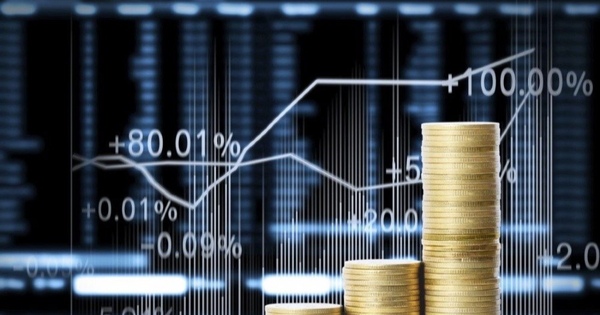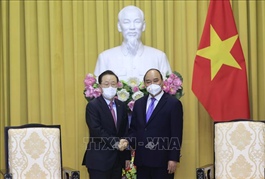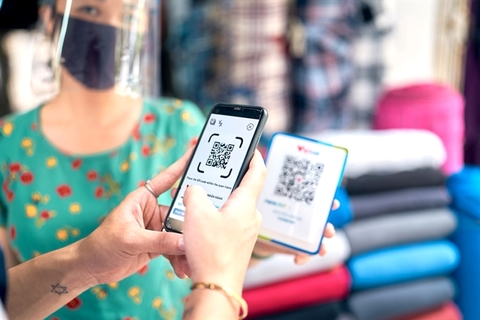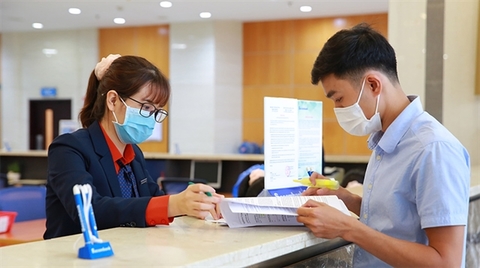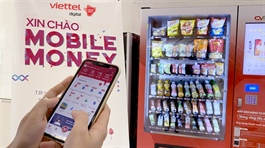Credit increase can become worrisome issue
Credit increase can become worrisome issue
During the first quarter of 2022, when credit growth rose spectacularly, regulators believed this was a positive sign of recovery for the economy. However, several underlying issues show that credit flow was actually actively manipulated.
Illustrative photo. |
Unprecedented increase
By the end of January, credit growth recorded an increase of 2.74%, the highest since 2018. Data from the regular meeting of the government in March shows that credit till the end of February increased by 1.82%, compared to the end of 2021, but lower than the growth recorded at the end of January. In February this decreased by about VND 96,000 bn compared to January. However, in March, credit reversed and increased drastically and suddenly. Data from the General Statistics Office shows that as of 21 March, the credit market was at 4.03%. At the regular press conference held by the Government in March, Mr. Dao Minh Tu, Standing Deputy Governor of the State Bank of Vietnam, said that from the beginning of the year till the end of March, credit turnover had reached 5.04%.
The target of increasing credit in 2022 is 14%, so in only three months, credit institutions have used more than one third of the whole year target. Normally, in the first quarter, the credit balance increase was quite low, but the trend of outstanding loans from the first months of 2022 have been appearing since 2017, although there has never been a year where credit has increased as strongly as now. The 5.04% increase in the first quarter is 2.3 times the 2.16% increase in the first quarter of 2021, and 3.8 times the credit growth in the first quarter of 2020, if compared to the period of the pandemic. Under normal economic conditions, credit in the first quarter of 2017 had the highest growth since 2011, but it was only 4.3%. In 2018, credit in the first quarter only increased by 3.29%, and in the first quarter of 2019 it increased by 3.19%.
At the same time, the credit of the whole industry has increased, and banks are also showing optimism about the situation in the credit market this year. For instance, last year VIB bank only achieved a credit turnover of 19%, but still boldly set a target to increase by 30% this year. MSB bank also has set target credit balance, including lending and investment in corporate bonds, at VND 130,752 bn, up by 25%. SeABank too expects the maximum credit balance of 17%. Many other banks also plan to increase the rate higher than 14% of the whole industry. VietinBank has stated that the credit balance in the first quarter has reached 7%.
According to Mr. Dao Minh Tu, an increase of 5.04% in the first quarter shows that the economy is moving on a positive line, and the Government measures to prevent and control the pandemic have been very effective. The daily life, production, and business of people has returned back to normal. However, the above increase compared to previous years is very high. At the end of the year, the State Bank of Vietnam will continue to study and adjust the credit level to ensure the macro monetary policy objectives, as well as also control the inflation.
Real estate credit
The demand for capital is now huge as production and business activities have reopened. However, the rapid increase in credit needs to be taken seriously. After the fourth wave of the pandemic, businesses are now recovering but many are not really healthy and lack the ability to absorb large capital. The ongoing situation shows that the money that banks are pouring into real estate businesses is very large. For instance, Sacombank provided short and long-term loans of more than VND 1,840 bn to FLC Group. BIDV also lent the FLC group more than VND 1,747 bn, OCB lent more than VND 1,392 bn, NCB lent about VND 634 bn, and Agribank also lent upto VND 169 bn.
Banks not only pour capital directly but also provide capital by buying corporate bonds. In a report on the results of issuance on 20 September 2021, a bond lot of VND 1,900 bn with a five-year term of Viet Star Company under the Tan Hoang Minh Group, shows that one credit institution had participated in the tranche with an amount of VND 950 bn. At the same time, in the structure, investors bought a lot of three-year bonds of Soleil Company that is also under the Tan Hoang Minh Group, issued on 1 November 2021, and a lot of two-year bonds issued on 6 July 2021. There are many investors also whose identities have not yet been announced.
Currently, the State Bank of Vietnam is asking banks not to lend more than 8% of the total credit amount allowed by the bank. Accordingly, real estate credit was suddenly stopped at some banks. However, whether capital flowing into real estate will decrease or not is still uncertain. In recent times, some real estate big wigs have joined banks in many ways, such as for personal loans. However, banks can still inject capital into real estate through consumer credit products. Currently, from state-owned banks to private commercial banks, all of them have announced shifting of focus from retail to wholesale, where the cash flow from the retail lending channel will go, and needs to be reassessed to avoid risks.
Some experts spoke with Saigon Investment about the economic recovery program being implemented, saying that this year the monetary policy must be flexible but tight, especially when it comes to controlling the outflow of credit. The 2% interest rate support package must achieve the highest efficiency. In particular, credit flow into the real estate sector must be strictly controlled, including credit for investment projects and credit for buyers. The current goal of the State Bank of Vietnam is to strive to reduce lending interest rates by 0.5% to 1% in 2022 and 2023, respectively. Lowering interest rates will stimulate demand for loans, so it must be strictly controlled to avoid any future risks.


